Make olive groves green again
Published in Ecology & Evolution
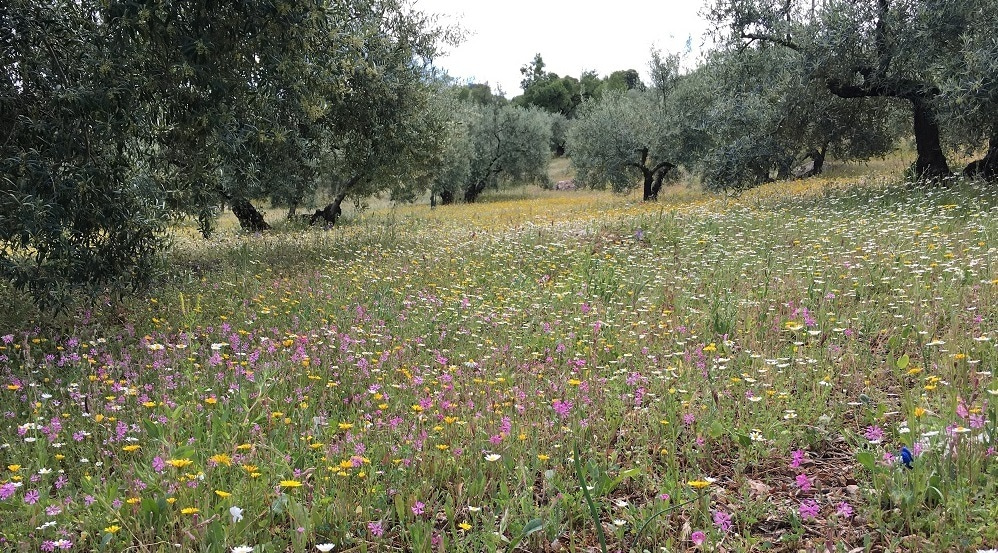
As a plant ecologist, I often struggle with the questions I want to address for understanding nature. However, this time was different. As a partner of a EU project for seed-based restoration (NASSTEC), our mission was to address a practical question: how can we restore the ground cover of olive groves with native species? The question was stated by a private-company partner (Semillas Silvestres) and required to join ecology and agronomy. The underlying problem is evident: if you have ever crossed southern Spain, you probably noticed the vast extension of olive groves dominated by bare ground. The lack of green cover is a serious problem for environment and economy, threating one of the most precious products of agriculture: olive oil. Our mission was to reverse this situation by the use of native seeds.
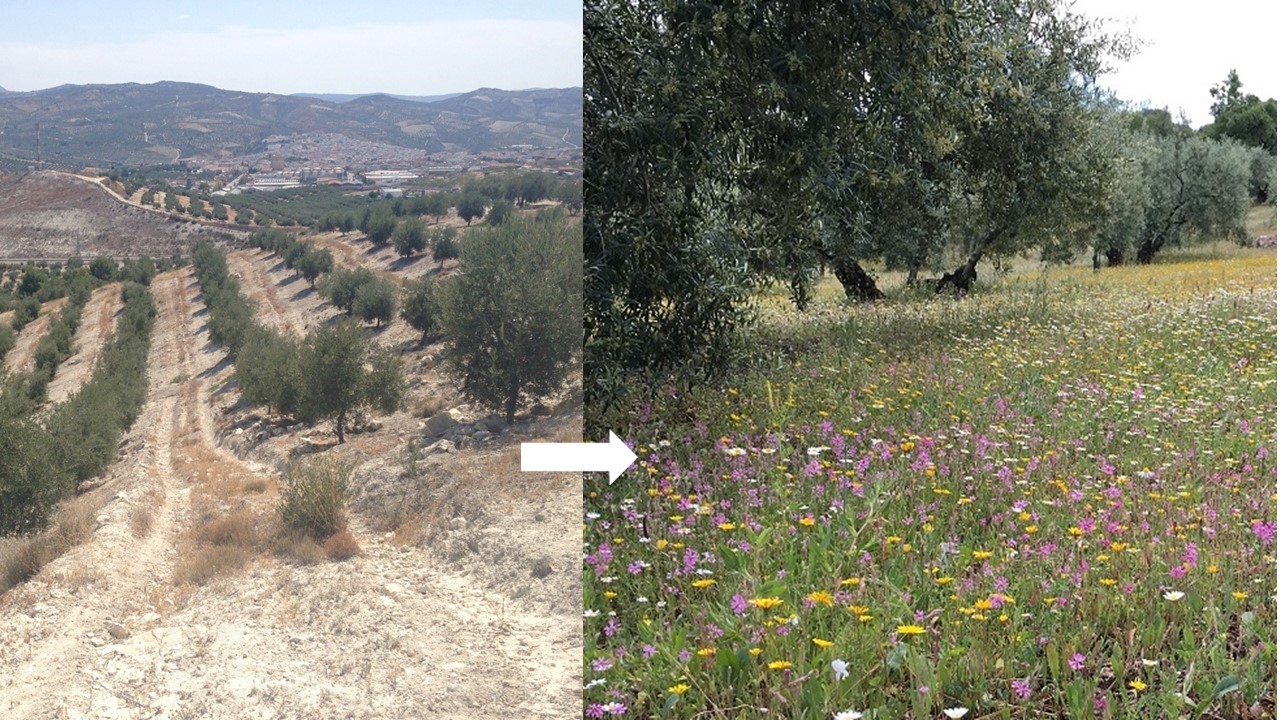
Agricultural practices from the last decades maximized the use of herbicides at the cost of traditional practices that preserved an herb layer and indirectly controlled for erosion. Current guidelines on agroecology focus on the cultivation of annual species, and we found that most of the species used until now are exotic or not suitable for this purpose. We came up with the idea of looking at the agroecosystem species pool, i.e. those species that can thrive in olive groves naturally. We created a database with ruderal species known to occur in the agroecosystem and collected all available traits about their life structure, growth, life cycle, ecological requirements, etc. We then filtered out the species with not suitable traits.
But something was still missing. If we want to restore large areas with such native plants, we will need tons of seeds, but they are not available in the market. To address this, we collected seeds of 10 grasses and 30 forbs from natural populations and conducted agronomic experiments to verify if they were suitable for seed farming; i.e. whether ecologically suitable species may be produced and harvested by large amounts using mechanized methods. Production traits included phenological responses in agricultural farms and other properties related to seed harvesting or seed cleaning.
We used a decision-making process to classify the species according to their suitability for olive farming and seed farming, based on their ecological and agronomic traits, respectively. Surprisingly, we found that most species scored high in their suitability for ground cover restoration in olive groves. The information about traits also allows to create ad-hoc seed mixtures to maximize different services in the system (e.g. pollination). Our evaluation process is flexible enough to be applied in any other agroecosystem, assuming there is enough information about ecological and agronomical properties of native plants. Indeed, similar approaches will be needed for addressing the UN decade on Restoration Ecology (2010-2030) in Mediterranean agroecosystems.
See the paper here and read a view only version here.
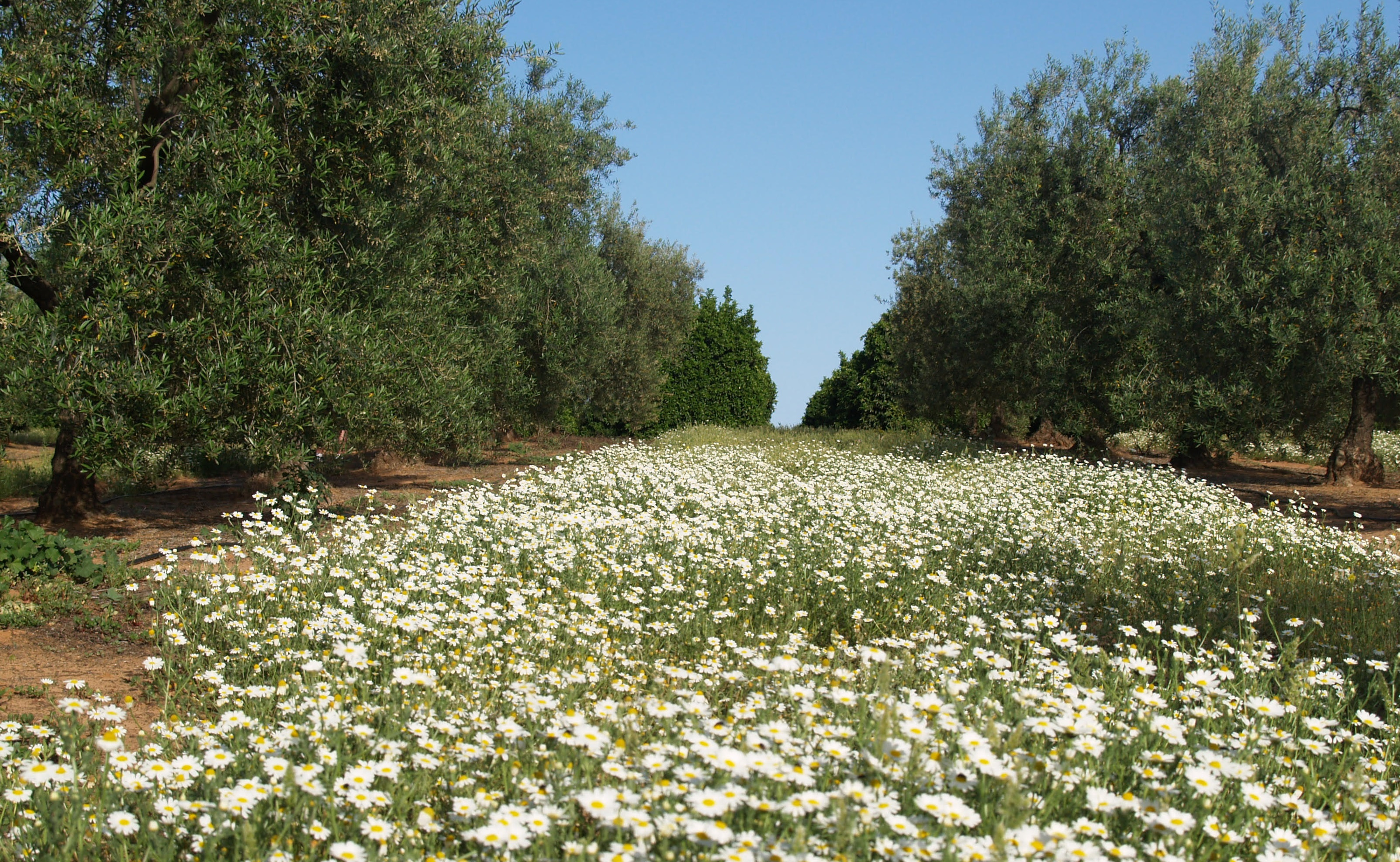
Borja Jiménez-Alfaro, Research Unit of Biodiversity (UMIB), University of Oviedo
Follow the Topic
-
Nature Plants

An online-only, monthly journal publishing the best research on plants — from their evolution, development, metabolism and environmental interactions to their societal significance.
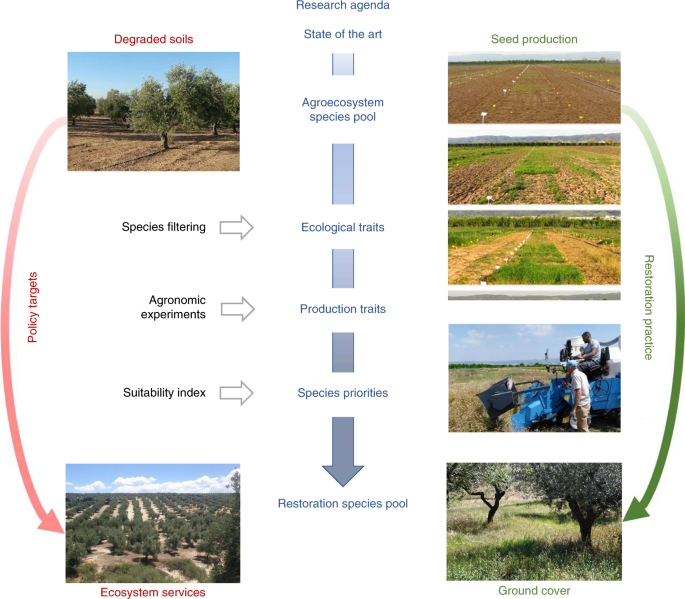
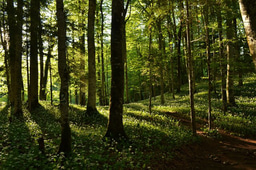
Please sign in or register for FREE
If you are a registered user on Research Communities by Springer Nature, please sign in